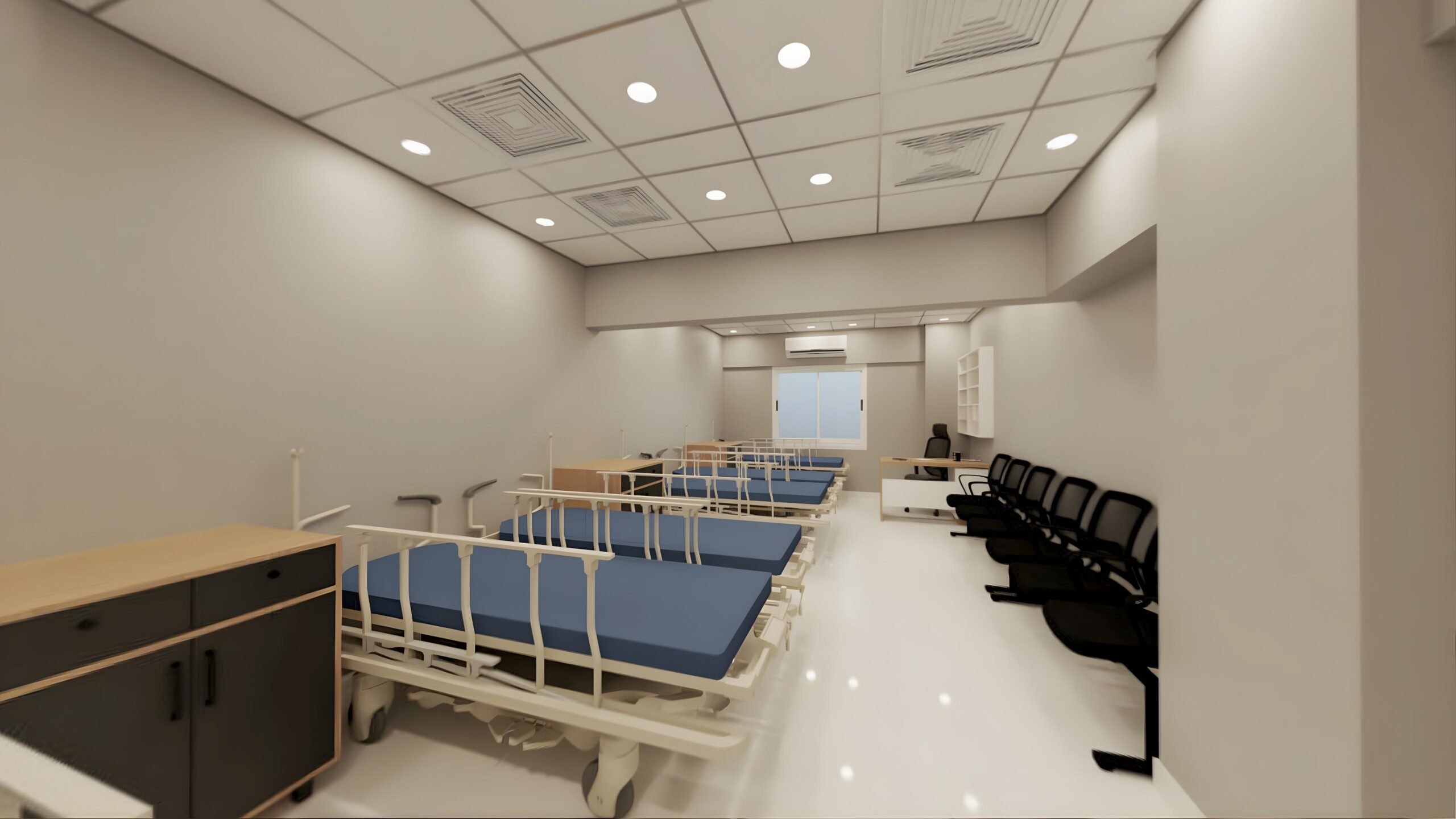Table of Contents
360° visualization in healthcare design is revolutionizing the way medical spaces are conceived, built, and experienced. Today, hospitals and clinics are moving beyond sterile, clinical environments toward healing-focused, patient-centric layouts enhanced by cutting-edge visualization technologies.
By leveraging immersive 3D models, designers can create spaces that are both functional and emotionally supportive, ensuring better patient outcomes and optimized operational efficiency. This trend is shaping healthcare architecture globally, creating environments that prioritize comfort, accessibility, and wellness.
The Rise of 360° Visualization in Healthcare Design
The adoption of 360° visualization in healthcare design allows architects, interior designers, and hospital administrators to explore medical spaces virtually before construction begins.
Key benefits include:
-
Enhanced spatial awareness: Stakeholders can experience entire layouts in a fully immersive environment.
-
Error reduction: Potential inefficiencies are identified early, preventing costly modifications.
-
Improved collaboration: Medical staff can provide feedback during the design process.
-
Patient journey mapping: Simulations enable optimized accessibility, lighting, and patient comfort.
This technology ensures that healthcare environments are not only functional but also emotionally supportive, reducing patient anxiety and improving overall satisfaction.
Patient-Centric Layouts: Designing for Comfort and Healing
Patient-centered design is now a critical element in healthcare architecture. Hospitals focus on emotional well-being, privacy, and stress reduction alongside clinical efficiency.
Key elements of patient-centric layouts:
-
Biophilic design: Natural light, greenery, and textures for a calming atmosphere
-
Wayfinding simplicity: Clear signage to reduce confusion
-
Privacy-focused zones: Individual consultation and rest areas
-
Adaptive environments: Adjustable lighting, acoustics, and seating
Globally, medical centers are integrating family lounges, art therapy spaces, and sensory gardens, transforming hospitals into environments that actively support healing.
Sustainable Healthcare Interiors for a Better Future
Sustainability is a central concern in modern healthcare design. Hospitals are high-energy facilities, and eco-conscious interiors help reduce environmental impact while enhancing patient health.
Sustainable design strategies include:
-
Renewable materials: Bamboo, cork, recycled metals
-
Smart energy systems: Automated temperature and lighting control
-
Non-toxic finishes: Safer indoor air quality
-
Water-saving technologies: Efficient plumbing and sterilization systems
These innovations reduce operational costs, create healthier spaces, and align with global sustainability initiatives.
Technology Integration: Smart Hospitals
Modern hospitals integrate technology seamlessly to enhance patient experience and facility management.
Technological advancements include:
-
IoT-based systems: Adaptive lighting and environmental controls
-
Touchless interfaces: Reduce infection risk
-
Augmented reality: Used in patient education and design planning
-
Digital wayfinding: Simplifies navigation for patients and visitors
These smart solutions, when paired with 360° visualization in healthcare design, create efficient, patient-friendly environments.
Global Inspirations in Healthcare Design
Healthcare design practices vary across regions, influenced by culture, climate, and technology:
-
Europe: Scandinavian designs focus on minimalism and mental wellness
-
Asia: Japanese hospitals combine tradition with smart technologies
-
Middle East: Luxury healthcare experiences inspired by hospitality principles
-
North America: Emphasis on sustainability and flexible layouts
These examples demonstrate how 360° visualization in healthcare design can adapt global best practices to local needs.
Role of 3D Modelling and Visualization in Collaboration
3D modelling and visualization play a critical role in collaborative healthcare design:
-
Photorealistic renders: Showcase lighting, texture, and spatial flow
-
Real-time adjustments: Modify layouts to optimize workflows
-
Virtual walkthroughs: Enable stakeholders to experience the final space
This ensures that every design decision aligns with patient comfort, staff efficiency, and operational effectiveness.
The Shape Interiors: Experts in 360° Visualization
The Shape Interiors is the best for Interior Design Consultancy & 3D Modelling services for both Residential & Commercial Spaces.
Founded in 2017 by Kazim Ratnani, The Shape Interiors has emerged as a trusted name in interior design consultancy and 3D modelling. Our expertise lies in creating bespoke designs that exceed client expectations.
We deliver 360 renders providing comprehensive visualization of final designs, ensuring every detail aligns perfectly with client visions. Customer satisfaction is the cornerstone of our mission.
Choosing The Shape Interiors means selecting a partner dedicated to turning visions into reality, blending creativity and technical precision for exceptional results.
Future Trends in Healthcare Design
The future of healthcare design emphasizes:
-
AI-driven space optimization for real-time feedback
-
Adaptive sensory environments for diverse patient needs
-
Emotional design incorporating art, light, and wellness
With 360° visualization in healthcare design, these innovations can be implemented seamlessly, ensuring hospitals are immersive, inclusive, and healing-focused.
The era of 360° visualization in healthcare design is transforming hospitals worldwide. From patient-centric layouts to sustainable interiors and smart technology integration, modern healthcare spaces are designed for comfort, healing, and operational efficiency.
For visionary healthcare spaces brought to life through precise 3D modelling and expert consultancy, contact The Shape Interiors today via the WhatsApp icon on the bottom right of our website.




